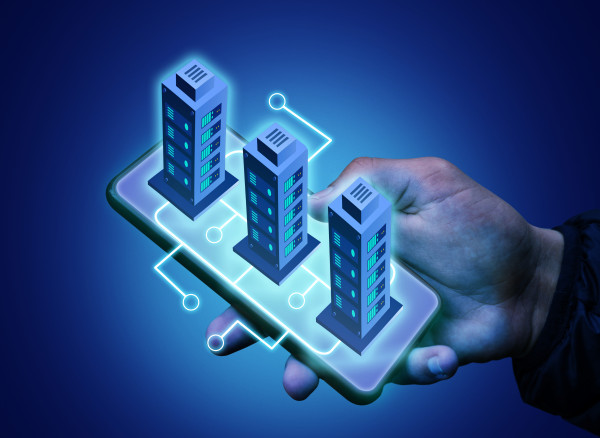Digital twins have evolved to become more complex and dynamic. They now represent not just a basic virtual version of a single asset but entire systems, cities, and even complete supply chains. This evolution is driven by the convergence of powerful technologies, most notably the integration of spatial data. At STL Digital, we do not regard a spatial digital twin as the 3D model only; it is a virtual world continuously aligns with its real-life counterpart, offering a holistic view of the physical spaces and their functionality. This convergence of the physical and digital creates new optimization, innovation, and decision-making opportunities.
The next-generation digital twin is one that includes a wider scope of data, such as spatial and environmental data, to develop a dynamic interconnected virtual ecosystem. This blog post examines the fact that spatial twins that are fueled by innovation in AI and a strategic approach are becoming a force multiplier that is critical in the way modern businesses operate.
The Core of Spatial Digital Twins
Spatial digital twin is anchored on three major building blocks:
- Data Foundation & Governance: The accuracy and usefulness of the twin is based on high-quality real-time data being accessible at all times. It is of utmost importance to have a well-built database and data governance system to guarantee that this information is both accurate and timely, so that the twin can be a reliable source of information.
- Physics + Machine Learning Model: To be a real acting mirror, the twin should be more than just visual. It should be driven with the help of both physical modeling and machine learning algorithms. The combination enables the twin to both project the present state and also be able to anticipate the future and simulate the what-if scenarios with high fidelity. According to McKinsey, Technology Trends Outlook 2024, digital twins are becoming more dependent on technologies of spatial, immersive, and virtual environments. This convergence improves machine learning models and physics-based simulations, allowing making more accurate predictions, planning the scenario, and interactive experiences.
- Visualization & Experience Layer: The experience created by the twin should be displayed in the manner that is easy to understand and to be put into action by various users. This may be as detailed as 3D/VR worlds filled with engineers to managers with simple role based dashboards. The idea is to simplify the complex data and make the users have the ability to interact with the twin, simulate, and collaborate flawlessly. This generates an interesting digital experience to all the stakeholders.
Where Spatial Twins Create Immediate Value
The practical uses of the spatial digital twins are enormous, and the value is achieved in a variety of fields. An IDC survey indicates a remarkable level of familiarity with digital twins in the resource and construction (52%), manufacturing (40%), professional services (40%), transportation and logistics (37%), energy (37%), and finance (36) segments. This generality highlights the importance of the technology in improving the efficiency and decision-making of cross-industry ecosystems.
- Smart Cities & Urban Planning: The city is being transformed into spatial twins, which is transforming the management and development of cities. They enable planners to emulate the effect of the new infrastructure projects, optimize traffic movement in real-time, control emergency reaction, and examine energy utilisation patterns. This predictive mode would help cities to be more sustainable, efficient and resilient.
- Infrastructure and Utilities: Spatial digital twins can see every important infrastructure, such as bridges and power grids, as well as water treatment facilities. They allow proactive maintenance, i.e. predicting asset failures in advance, resource allocation optimization, and provide better safety. The twin will be able to monitor structural integrity of a bridge with sensor data to warn the engineers of possible issues in situ, preventing disastrous failures and prolonging the life of the asset.
- Manufacturing & Industrial Operations: Whereas the conventional digital twin technology is dedicated to one machine or production line, the spatial twin extends it to the whole factory or campus. It is capable of optimizing the factory layout, and controlling the complicated logistics and supply chains. Through sprinting of digital kaizen in the twin, manufacturers are able to de-bottleneck boundaries, as well as to balance labor and automation, which can result in vast improvements in efficiency and Overall Equipment Effectiveness.
The role of Technology and Services
To make a spatial digital twin a reality, it is necessary to approach it in a holistic manner, which includes a variety of digital technology services. The software does not make an implementation successful but the whole ecosystem of data, models, and user interactions.
Data Services and AI Analytics: Data is the blood of any digital twin. The data analytics and AI services are needed to convert raw data of different sources into a form of actionable insights. These services handle all the data ingestion and harmonization and can also develop and deploy machine learning models. The absence of an effective data analytics engine would make a spatial digital twin just a table of lifeless information that cannot be predicted or optimized.
AI Innovation: Digital twin capabilities are being pushed to the next stage through the integration of advanced AI. According to Gartner, top innovations like AI Agents and Decision Intelligence are driving the new autonomous business era. This focus on automation and intelligence enables systems to evolve self-architected workflows and facilitates a smooth interaction between intelligent systems and people. Consequently, a less technical operator can ask an AI Agent within the spatial twin a natural language request—such as, “Why was energy consumption in Building A higher than it was yesterday?”—and instantly derive a realistic, locatable solution with a suggested response.
Integration with Business Systems: The value of a spatial digital twin compound when smoothly combined with the current enterprise systems such as ERP, MES, and PLM. This enables the recommendations of the twin to prompt in-world actions, including the creation of a work order, a change in a production schedule, or a re-routed delivery to be trustworthy and secure.
A Pragmatic Roadmap for Implementation
A spatial digital twin may appear to be an overwhelming endeavor, yet a step-by-step value-based methodology can guarantee a quick payback period.
Phase 0: Strategy & Scoping: This is the first phase, which is concerned with defining the business problem. What is the target value? Is it minimizing energy use in a building, streamlining traffic in a city or enhancing factory throughput? The first and the most important step is to agree on a certain, high-value use case.
Phase 1: Data Preparation: The twin dies by its data. This stage is dedicated to the process of connecting to, instrumenting priority assets, constructing a golden dataset and the governance that is needed to ensure data quality. This basic research will make the twin reliable.
Phase 2: MVP Twin: This is aimed at providing a Minimum Viable Product (MVP) to show value in a short period of time. This may be a one-asset twin to predictively maintain a critical equipment or a scaled-down model of a particular city with the view of optimizing their waste disposal. The trick is to provide a small but useful sense-think-act loop which provides the decision back into operations.
Phase 3: Scale & Integrate: After the MVP demonstrates itself to be valuable, it is possible to add more scenarios, lines, or even entire plants to the twin. This is the point at which the core business system integration is necessary, and a successful pilot may be scaled and, hence, enterprise-wide.
These metrics translate into several key benefits:
Cost Reduction: Physical prototypes will be reduced, maintenance schedules will be optimized, and energy consumption will be less direct cost reduction.
Enhanced Productivity: Since workflows and processes are simulated, companies are able to de-bottleneck operations, enhance asset utilization, and enhance OEE.
Improved Decision-Making: The twin offers a single perspective of the complex systems, allowing leaders to make decisions faster, more informed and informed.
Sustainability: Spatial twins provide a strong sustainability framework, enabling organizations to design and optimize energy consumption, minimize waste and better resource utilization. To illustrate this, a twin can be used by a city to determine how it can reduce its carbon footprint.
Agility and Innovation: The twin allows organizations to be more responsive to change and become more agile since it offers a risk free environment to experiment with.
Conclusion
The concept of spatial digital twins is no longer a nascent and immature technology, but it is a real thing that brings value to the present day. At STL Digital we co-create with organizations to design and operate large-scale systems, a single assembly line to an entire network of operations throughout the globe, and one-off assets to complicated, end-to-end value chains. We have partnered with deep industry delivery experience to enable you to use data analytics and AI services to turn confusion into competitive advantage.



